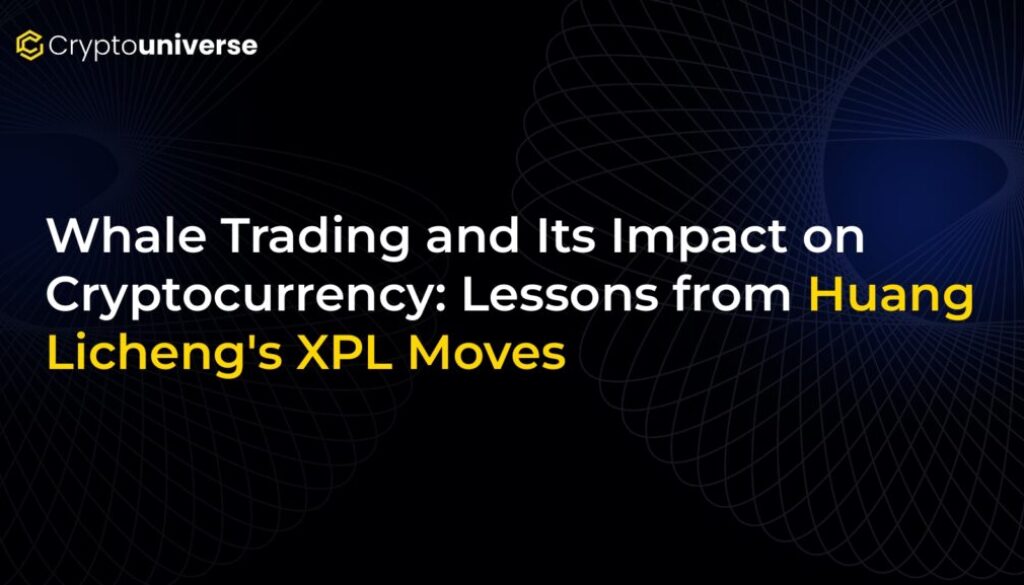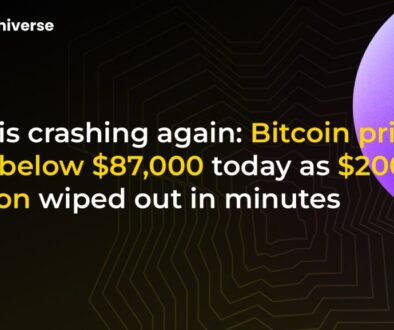Whale Trading and Its Impact on Cryptocurrency: Lessons from Huang Licheng’s XPL Moves

The Ocean of Crypto: When Whales Make Waves
In the vast and often turbulent ocean of cryptocurrency, some players are much, much bigger than others. These are the “whales”—individuals or entities holding enormous amounts of a particular digital asset. When a whale decides to move, they don’t just create a splash; they can create a tsunami that rocks the entire market. A recent series of trades by the well-known whale Huang Licheng involving the XPL token serves as a perfect case study on the profound impact of Whale Trading and Its Impact on Cryptocurrency: Lessons from
Huang’s decision to offload 700,000 XPL tokens, resulting in a staggering $8 million unrealized loss for himself, sent ripples of volatility through the market. But what does this mean for the average investor, the broader market, and the fintech companies building in this space? Let’s dive in.
What is Whale Trading?
Whale trading is simply the buying or selling of massive quantities of cryptocurrency. Think of it this way: if the crypto market is a pond, a regular investor is a small fish. A whale, however, is a massive creature whose every move displaces a huge amount of water. Their actions can single-handedly influence an asset’s price and liquidity, especially for smaller, less-traded cryptocurrencies like XPL.
These large-scale transactions can be a double-edged sword. On one hand, whales can provide essential liquidity to a market. On the other, their sudden moves can trigger extreme volatility and panic among smaller investors.
A Case Study in Volatility: Huang Licheng’s XPL Trade
To understand the real-world impact, let’s look closer at Huang Licheng’s recent activity. By selling off 700,000 XPL, he absorbed a personal paper loss of $8 million. The immediate consequences for the XPL market were dramatic:
- Price Instability: The price of XPL fluctuated wildly, bouncing between $1.12 and $1.50 in the wake of his trades. For a smaller-cap altcoin, such a swing is significant and can wipe out retail positions in an instant.
- Liquidity Shock: A massive sell order like this can absorb all the buy orders at current price levels, causing the price to plummet until it finds enough buyers at lower prices. This drains liquidity and makes it harder for others to trade without experiencing significant price slippage.
- Investor Panic: Many traders and bots monitor the wallets of known whales. When a major player like Huang starts selling—especially at a loss—it can be interpreted as a signal of lost confidence in the project, triggering a chain reaction of panic selling from others who follow their lead.
The Long-Term Ripple Effects of Whale Activity
Beyond the immediate chaos, large-scale whale movements have longer-term implications that can shape the future of an asset.
Erosion of Market Confidence
When a whale holds a massive unrealized loss, it creates an overhang on the market. Other investors become wary, knowing that the whale could decide to cut their losses at any moment by selling the rest of their holdings. This lingering threat can suppress prices and deter new capital from entering the ecosystem.
Perception of Manipulation
While not always the case, the immense power of whales raises concerns about market manipulation. A whale could intentionally crash a price to buy back cheaper (a “shakeout”) or orchestrate a pump-and-dump scheme. This perception alone can damage a project’s reputation and legitimacy.
Navigating the Whale-Infested Waters: Strategies for Survival
The presence of whales is a reality of the crypto market. So, how can investors and businesses protect themselves and even thrive in this environment?
For Individual Investors:
- Diversify Your Portfolio: The simplest rule is often the most effective. Avoid concentrating your capital in a single, low-liquidity altcoin where you are more exposed to a whale’s actions.
- Use On-Chain Analytics: Tools that track large wallet movements can provide valuable insights. However, use this information to understand market dynamics, not to blindly copy-trade. A whale’s reasons for selling might be entirely different from your own financial goals.
- Focus on Fundamentals: A strong project with genuine utility, a solid team, and a vibrant community is more likely to weather the storm of whale-induced volatility over the long term.
For Fintech Startups and Crypto Projects:
For companies operating in the crypto space, managing the risks associated with whale trading is crucial for operational stability.
- Real-Time Monitoring: Invest in advanced analytics tools to monitor on-chain activity. This allows you to anticipate large market movements and adjust treasury management strategies accordingly.
- Robust Liquidity Management: Maintaining deep liquidity is your best defense against volatility. This can involve holding reserves in stablecoins or other highly liquid assets to cushion the impact of sudden price swings.
- Enhanced Due Diligence: For services that handle large transactions, conducting thorough Know Your Customer (KYC) and Anti-Money Laundering (AML) checks is essential for regulatory compliance and risk mitigation.
- Build a Strong Risk Management Framework: Cultivate a risk-aware culture within your organization. Establish clear protocols for treasury management, asset custody, and responding to extreme market events.
Conclusion: Understanding is Key
Whale trading is an intrinsic and powerful force within the cryptocurrency market. As the case of Huang Licheng and XPL demonstrates, the actions of a single large player can dictate short-term price action, influence investor sentiment, and create significant operational challenges.
However, by understanding these dynamics, both individual investors and fintech companies can develop proactive strategies. Through diversification, diligent monitoring, and robust risk management, it is possible to navigate these turbulent waters and build for long-term stability and growth in this exciting digital frontier.


